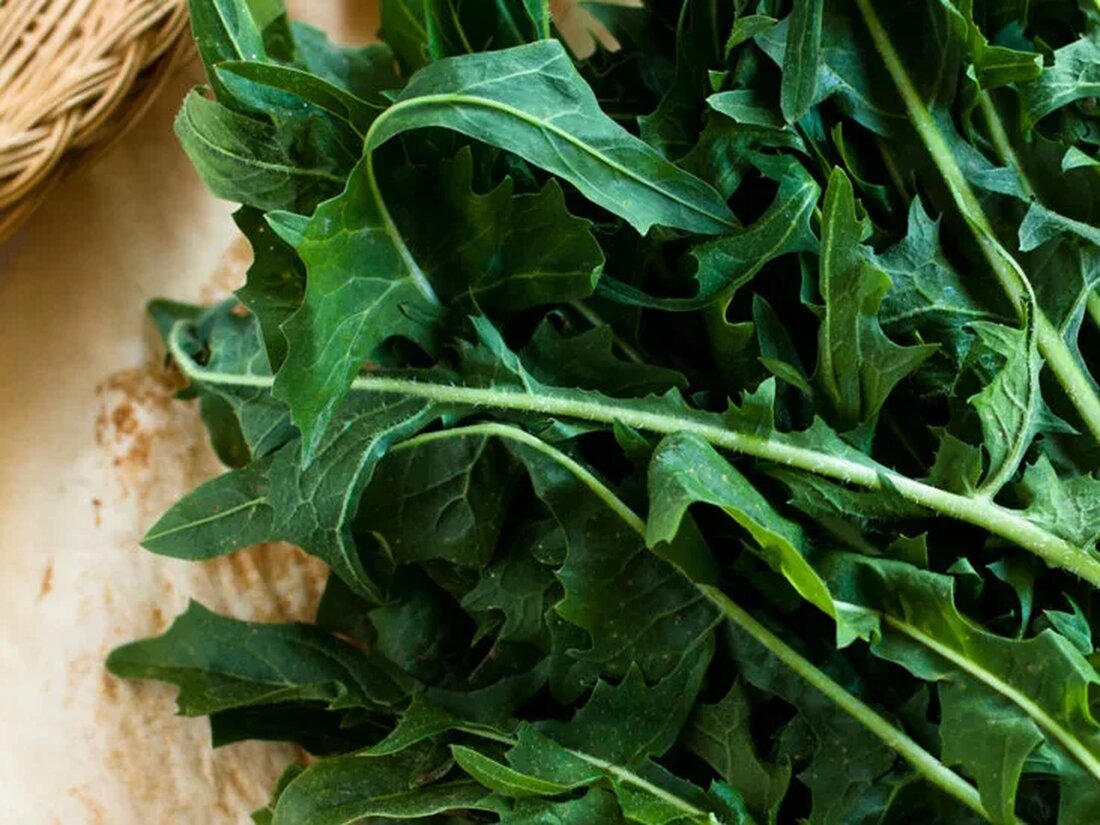Dandelion leaves promote liver, bone and joint health + growing tips & recipe
Dandelion leaves, or dandelion (Taraxacum officinale), is the humble powerhouse of herbal medicine. Dandelion (particularly the leaf) is often characterized as a weed and is filled with beneficial nutrients that allow it to make essential, positive contributions to supporting health. In traditional Chinese medicine, dandelion is used to promote liver health, nourish bones and joints, and support the body's normal detoxification pathways. The plant is easy to grow, easy to use and its many beneficial properties might surprise you. Nutrients in Dandelion Leaf Whether you add them to a leafy green salad or a green smoothie, dandelion leaves contain a variety of beneficial nutrients. In fact, every part of the plant is...

Dandelion leaves promote liver, bone and joint health + growing tips & recipe
Dandelion leaves, or dandelion (Taraxacum officinale) is the humble powerhouse of herbal medicine. Dandelion (particularly the leaf) is often characterized as a weed and is filled with beneficial nutrients that allow it to make essential, positive contributions to supporting health. In traditional Chinese medicine, dandelion is used to promote liver health, nourish bones and joints, and support the body's normal detoxification pathways. The plant is easy to grow, easy to use and its many beneficial properties might surprise you.
Nutrients in dandelion leaf
Whether you add them to a leafy green salad or a green smoothie, dandelion leaves contain a variety of beneficial nutrients. In fact, every part of the plant – the roots, leaves, crowns and flowers – is edible. Dandelion leaves contain beta-carotene, thiamine, riboflavin, calcium, iron, zinc and magnesium. They have more potassium than bananas, more vitamin A than carrots and more protein than spinach. Dandelion leaf is also a source of antioxidants that support cardiovascular health, phytonutrients such as alkaloids, steroids, and triterpenoids as well as kynurenic acid, which supports digestive health. ((Link removed), (Link removed), (Link removed), (Link removed))
Our recommendation: (link removed)
Here is the nutrient breakdown for half a cup of dandelion leaves.
| nutrient | 1/2 cup | Daily value |
|---|---|---|
| fibre | 1g | 4% |
| protein | 0.74g | 3% |
| calcium | 51 mg | 5.1% |
| iron | 0.85 mg | 5% |
| magnesium | 10 mg | 2.5% |
| phosphorus | 18 mg | 1.8% |
| potassium | 109 mg | 3.11% |
| sodium | 21 mg | 0.87% |
| zinc | 0.11 mg | 0.73% |
| Beta carotene | 1.61 mg | N/A |
| Riboflavin | 0.072 mg | 5.5% |
| Thiamines | 0.052 mg | 4.3% |
| Vitamin A | 2794 IU | 56% |
| Vitamin B6 | 0.069 mg | 3.45% |
| Vitamin C | 9.6 mg | 16% |
| Vitamin K | 214.1 mg | 267% |
Dandelion leaf supports a healthy liver
Dandelion leaf contains nutrients that directly and indirectly support normal liver function. In animal studies, dandelion leaves have been found to suppress fat accumulation in the liver. It contains antioxidants that promote normal lipid profiles and blood sugar. Antioxidants, such as those found in dandelion leaves, may be one of the best natural therapies for protecting the liver from oxidative stress. ((Link removed), (Link removed))
Our recommendation: (link removed)
Other Health Benefits of Dandelion Leaf
According to the principles of traditional medicine, dandelion leaves promote optimal fluid balance and stimulate the function and flow of the urinary system. It was also commonly used to calm an upset stomach and stimulate the appetite. Animal studies show that dandelion can reduce inflammation and support normal blood sugar levels. ((Link removed), (Link removed))
How to Grow Dandelions
To reap all the benefits of dandelions, it's best to grow your own. Dandelions grow readily throughout the Northern Hemisphere. In fact, many homeowners are desperate to prevent that Dandelions growing on her lawn. While dandelions easily grow naturally in a nearby park, they may have been exposed to chemicals or pesticides, and eating dandelions is not advisable.
Dandelion seeds are very cheap. Most local garden stores should have non-GMO seeds available. Plant the dandelion seeds in well-drained, fertile soil in early spring. Find a location with full or partial sun. Plant seeds directly into the soil 6cm deep and in single rows. The plant requires minimal care and is ideal for beginners - all you need to do is water sparingly and watch it grow.
Dandelions bloom around mid-spring, approximately 85 to 95 days after planting. You can harvest the green dandelion leaf throughout the growing season. Leaves can be eaten raw or blanched. Blanche dandelion leaves in salted, boiling water for a few minutes to remove some of the bitterness. As summer progresses, the leaves become more bitter.
Harvest the roots in the fall of the second year of growth. You can also dry the roots in the oven or with the help of the sun. Store the dried plant parts in an airtight container.
Dandelion tea
Dandelion tea can be made from root, flower, and leaf, each with a slightly different flavor profile and brewing instructions. Dandelion root tea, for example, is an inexpensive coffee substitute and weight loss aid.
To make dandelion leaf tea, simply take a small handful of dried dandelion leaves (discard any large stem pieces), crush them into small pieces, and place 1-2 teaspoons into an organic tea bag, reusable tea ball, teapot, or French press.
Heat, but do not boil, a cup of water - boiling water only accentuates the bitterness of the leaves. A temperature of around 80°C produces optimal taste. Pour your hot water into a teacup or mug and add your tea bag. Let it steep for 5 minutes and remove the leaves.
Serve dandelion tea hot or cold. Garnish with fresh dandelion flowers for visual flair. Dandelion tea easily absorbs additional flavors or a natural sweetener like honey. Some people add stevia or raspberry leaves during the steeping process. These flavors counteract the bitter notes of dandelion leaf without overpowering the natural flavors.
Our recommendation: (link removed)
Supplement with dandelion
There are many types of dandelion supplements to choose from; Liquid extracts, pills and tea are among the most common. Dandelion leaf is also an ingredient in many dietary supplements, particularly those that support liver health. It is best to only purchase supplements that contain organic dandelion leaves that have not been exposed to pesticides or other chemicals.
The leaf is not the only part of the dandelion plant that contains health-promoting nutrients. Dandelion root is also highly valued for its therapeutic properties.
Our recommendation: (link removed)

 Suche
Suche
 Mein Konto
Mein Konto
